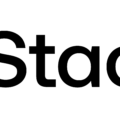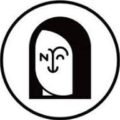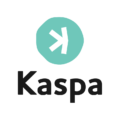Providers
The Frax ecosystem is a self-sufficient DeFi economy utilizing stablecoins as currency.
Support is available 24/7/365 via phone and chat
Mantle Network is an L2 technology stack for scaling Ethereum, and is the first core product of Mantle Ecosystem. Mantle Network strives to be compatible with the Ethereum Virtual Machine. Mantle Network’s modular architecture separates transaction execution, data availability, and transaction finality into modules — which can be individually upgraded and adopt the latest innovations.
As the world’s first DAO-spawned L2, Mantle Network is pioneering a vision for the mass adoption of token-governed technologies.
MNT is the native token used for:
Paying gas fees
Growing the ecosystem
Governance by the community
VeChain (VET) is a versatile enterprise-grade L1 smart contract platform.
VeChain began in 2015 as a private consortium chain, working with various enterprises to explore blockchain applications. VeChain would begin their transition to public blockchain in 2017 with the ERC-20 token VEN, before launching a mainnet of its own in 2018 using the ticker VET. VeChain has massively boosted efficiency, traceability and transparency across data trails, supply chains and within novel ecosystems, such as those in San Marino targeting UN SDGs.
What Is Stacks (STX)?
Stacks is a Bitcoin Layer for smart contracts; it enables smart contracts and decentralized applications to use Bitcoin as an asset and settle transactions on the Bitcoin blockchain.
Bitcoin is the largest, most valuable, and most durable decentralized asset. The Stacks layer unlocks $500B in BTC capital using the Bitcoin L1 as settlement for decentralized applications.
Stacks has knowledge of the full Bitcoin state, thanks to its Proof of Transfer consensus and Clarity language, enabling it to read from Bitcoin at any time.
All transactions on the Stacks layer are automatically hashed and settled on the Bitcoin L1. Stacks blocks are secured by 100% Bitcoin hashpower. In order to re-order Stacks blocks/transactions, an attacker would have to reorg Bitcoin.
What Is Enjin Coin (ENJ)?
Enjin Coin is a project of Enjin, a company that provides an ecosystem of interconnected, blockchain-based gaming products. Enjin's flagship offering is the Enjin Network, a social gaming platform through which users can create websites and clans, chat, and host virtual item stores.
Enjin allows game developers to tokenize in-game items on the Ethereum blockchain. It uses Enjin Coin, an ERC-20 token, to back the digital assets issued using its platform, meaning that items can be bought, sold and traded with real-world value.
Enjin Coin was first announced in July 2017, and it launched on the Ethereum mainnet in June 2018.
Enjin Coin (ENJ) is a digital store of value used to back the value of blockchain assets like non-fungible tokens (NFTs). Every asset minted with the Enjin Platform contains ENJ, a minting resource which is locked inside NFTs and removed from circulation. Minting blockchain assets with ENJ provides a variety of benefits to creators and users:
Infuses them with a reserve value
Ensures their transparency and scarcity
Gives them instant liquidity
Provides utility in games and apps
Anti-inflationary
Enjin's "melting" functionality allows users to destroy their blockchain assets at any time to retrieve the ENJ value from within.
The Enjin blockchain ecosystem aims to offer software products that make it easy for everyone to develop, trade, monetize, and market with blockchain.
Founded in 2009, Enjin has roots in the gaming industry, with the company’s first product, a gaming community platform called the Enjin Network, growing to 20 million users over the course of a decade.
In 2017 following an ICO, Enjin established itself as a leading blockchain ecosystem developer, building a suite of software products that enable anyone to easily mint, manage, trade, distribute, and integrate blockchain assets.
Enjin’s co-founder Witek Radomski wrote the code for one of the first ever non-fungible tokens (NFTs) and is also the co-author of the ERC-1155 Ethereum token standard.
Built on top of an on-chain infrastructure, the Enjin ecosystem enables game developers and businesses of all sizes to use tokenized digital assets as part of their acquisition, retention, engagement, and monetization strategies. The Enjin ecosystem is fueled by Enjin Coin (ENJ), a cryptocurrency used to back the value of blockchain assets.
What Is Arbitrum (ARB)?
Arbitrum is an Ethereum layer-two (L2) scaling solution. It uses optimistic rollups to achieve its goal of improving speed, scalability and cost-efficiency on Ethereum. Arbitrum benefits from the security and compatibility of Ethereum. Another benefit is the higher throughput and lower fees compared to Ethereum. That is made possible thanks to moving most of the computation and storage load off-chain.
Arbitrum’s native token is called ARB and is used for governance. Offchain Labs, the developers behind Arbitrum, announced the shift to a decentralized autonomous organization (DAO) structure — the Arbitrum DAO. ARB holders can vote on proposals that affect the features, protocol upgrades, funds allocation and election of a Security Council.
Arbitrum has an ambitious roadmap for 2023, which includes: Launching its own layer-three solution called Orbit; Enabling developers to deploy programs written in popular programming languages like Rust, C++, and more using Stylus; Expanding its validator set to include more independent institutional validators; Moving its protocol to layer two with Arbitrum One.
On March 16, 2023, Arbitrum announced their highly anticipated airdrop of ARB. The token will be airdropped to early users and DAOs building on Arbitrum, with 12.75% of the total supply to be distributed. Recipients were rewarded on a point-based system depending on their interaction with the Arbitrum network until a cutoff date of March 1, 2023. The token generation event is on March 23, 2023.
Ronin is an EVM blockchain crafted for developers building games with player-owned economies.
Support is available 24/7/365 via phone and chat
APENFT was officially registered in Singapore on March 29, 2021 to meet opportunities and address pain points in the industry.
Core businesses of APENFT include: investing in top NFT platforms and artworks, incubating leading NFT artists to build a bridge between world-class artists and the NFT world; sponsoring galleries, organizing art exhibitions or publications, and setting up awards to support art creation and criticism; establishing art collections, etc.
By applying blockchain technology into the NFT world, APENFT Fund expands the use cases of blockchain. The Fund purchases well-known traditional and NFT artworks as underlying assets, and works to improve the NFT trading standard. It provides support to government agencies, universities, lawyers and industry elites in issuing policies that govern the healthy development of the industry.
There are now three major use cases in the blockchain industry, namely value exchange, collaboration, and record-keeping. The unique NFT fits in all three of the use cases. It is not only a hot trend in the blockchain industry but also a critical element that is very likely to revolutionize the industry and take it to the next level. As a blockchain enterprise, APENFT will invest in artworks and promote traditional and digital art by leveraging its strengths in technology, market, industry and policy research, with the aim of introducing blockchain into diverse use cases.
What Is KASPA (KAS)?
Kaspa is a proof-of-work (PoW) cryptocurrency which implements the GHOSTDAG protocol. Unlike traditional blockchains, GHOSTDAG does not orphan blocks created in parallel, rather allows them to coexist and orders them in consensus. The Kaspa blockchain is actually a blockDAG. This generalization of Nakamoto consensus allows for secure operation while maintaining very high block rates (currently one block per second, aiming for 10/sec, dreaming of 100/sec) and minuscule confirmation times dominated by internet latency.
The Kaspa implementation includes a lot of cool features such as Reachability to query the DAG's topology, Block data pruning (with near-future plans for block header pruning), SPV proofs, and later subnetwork support which will make future implementation of layer 2 solutions much easier.










